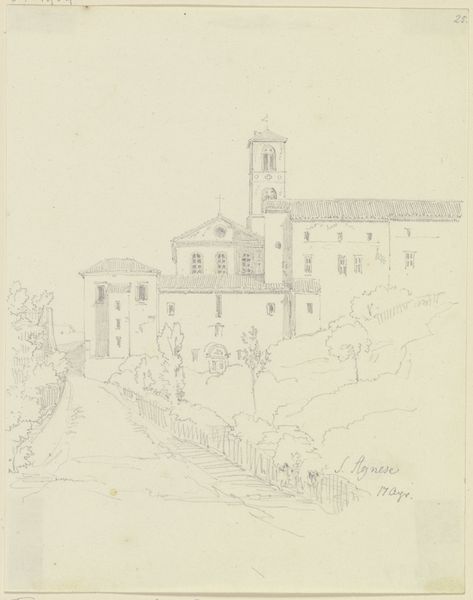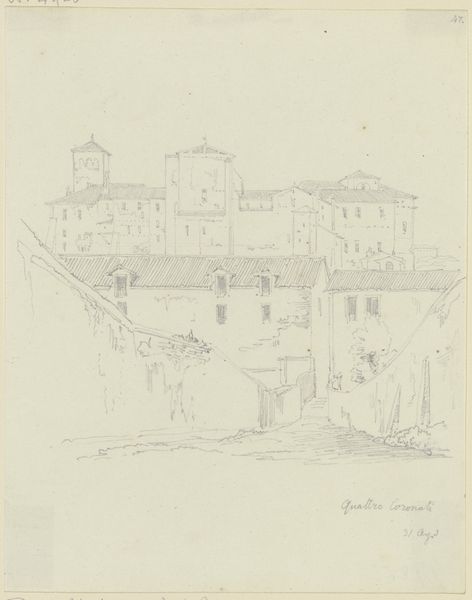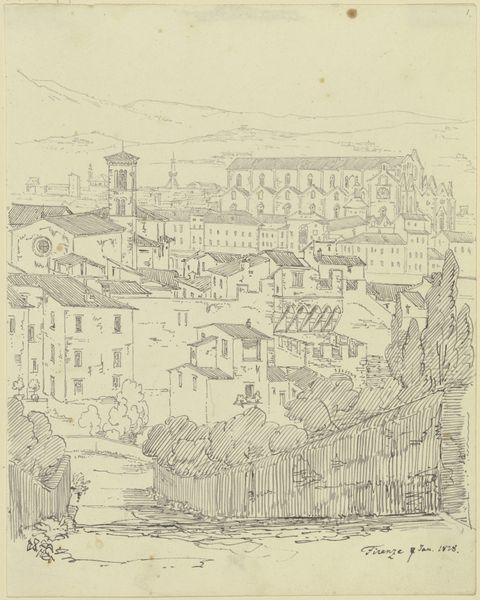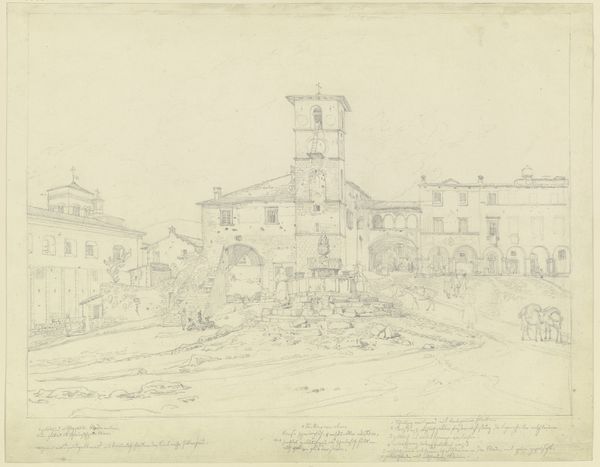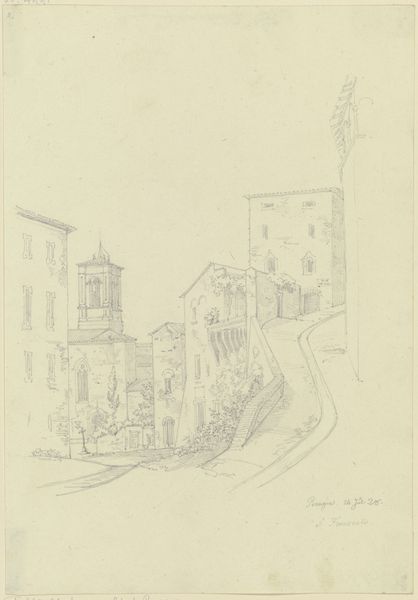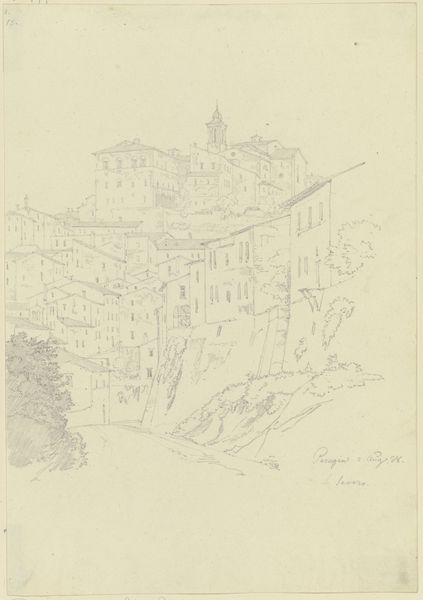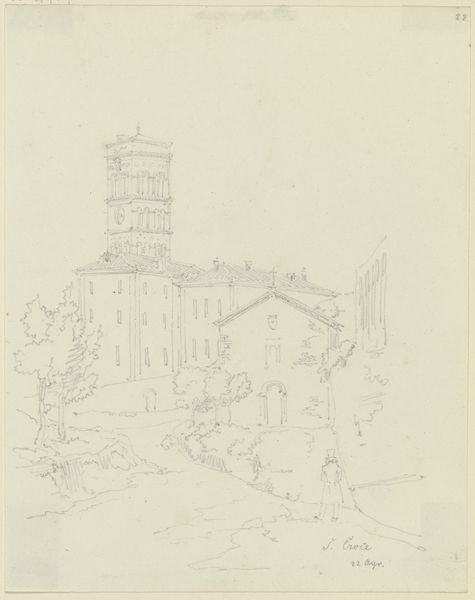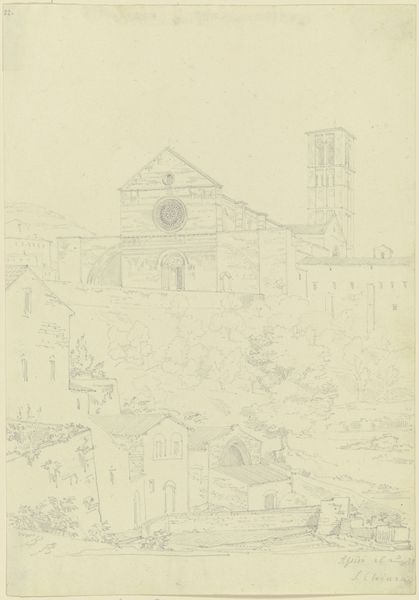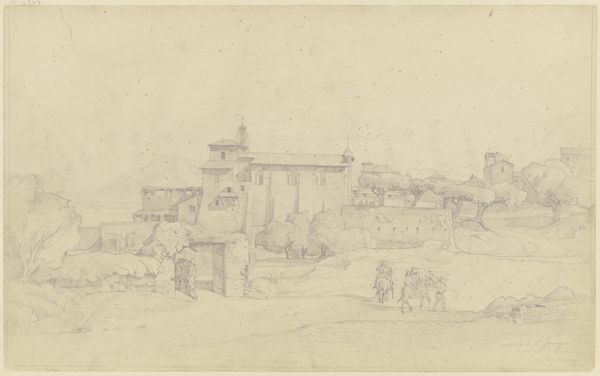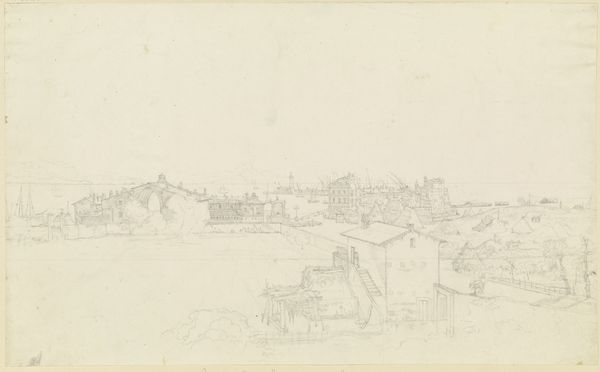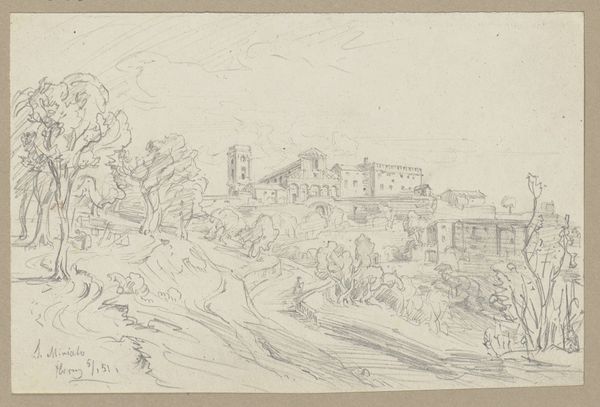
S. Bartolomeo all’Isola in Rom, vom Pons Aemilius aus gesehen 1 - 1828
0:00
0:00
Copyright: Public Domain
Curator: Here we have Friedrich Maximilian Hessemer’s "S. Bartolomeo all’Isola in Rom, vom Pons Aemilius aus gesehen," a drawing from 1828 currently residing at the Städel Museum. It captures a cityscape view with architectural precision. Editor: It feels so light, almost ephemeral. The delicate pencil work makes it seem as though the buildings are dissolving into the Roman atmosphere. A Romantic ruin about to become a literal ruin, maybe? Curator: Romanticism was definitely interested in ruins and the sublime. However, Hessemer was interested in precision in his depictions. I would say this shows more a detailed topographical interest typical of that time. Rome was, after all, a major site for pilgrimage, particularly for German artists keen on studying its classical heritage. Hessemer’s approach captures a sense of careful observation, perhaps a precursor to modern architectural documentation. The public role of images was very different than it is today. Editor: Absolutely, though one can still feel the emotional undercurrent. San Bartolomeo, with its tower, anchors the composition symbolically. In many ways the towers themselves can be related to strength or connection with spiritual ideas in older symbolic depictions of communities or even specific deities. Curator: Interesting perspective. Certainly, the church’s presence speaks to the enduring influence of the Catholic Church in Rome. But Hessemer was sketching more than a church, don’t you think? Editor: Of course, I am just interested in how he highlights certain features which hold layers of potential interpretation. Look at the broken bridge and fragmented forms, the Ponte Rotto just under San Bartolomeo, an almost literal reference to decay in Rome. That, too, would have appealed to the Romantic sensibilities, or more to an individual understanding that meaning accrues in objects. Curator: Well, our positions on it certainly help to highlight that the drawing manages to reflect on Roman history while simultaneously providing the viewer insight into its current moment. Editor: True! Looking closely always teaches one something new about both artist and the subject.
Comments
No comments
Be the first to comment and join the conversation on the ultimate creative platform.


